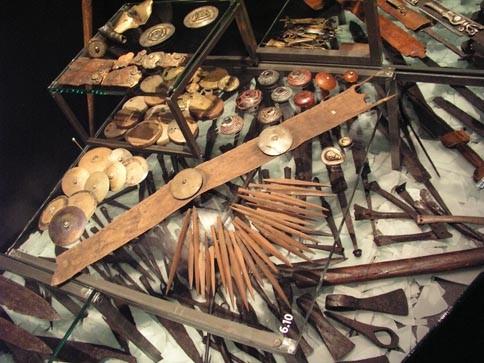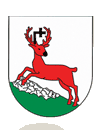A great cultural province of the Roman period covering central, northern and partly western Europe is the evidence for the first in the history of the continent integration that had no political character. The Germanic tribes living on lands outside the Roman Empire adopted a common garment style, used utensils and weapon. Most probably the unification applied to spiritual culture of these people. In the majority of these areas also a similar type of furnace was used for obtaining iron. Unification did not however mean the stability of settlement. Both in written and archaeological sources there is numerous information on migration of tribes. TThe reasons for such migration was most probably various. Tribal reality was far from idyllic pictures resulting to a great extent from our imagination rather than reliable sources. Apart from constant fight with unfavourable natural conditions, inhabitants of the Polish lands of the time had to face a number of external dangers. In most of the cases these were not threats of invasion by peoples coming from distant territories. The enemy could be the leader of the neighbouring tribe or even a village.

Cinerary urn of the Przeworsk culture from a warrior’s burial place discovered in the cemetery in Korytnica. Drawing by J. Okolus.
Societies inhabiting a great part of Europe in the first centuries A.D. reaching the Rhine to the west and the Danube to the south except for facing inflow of other peoples seeking new lands also competed with one another. Many a time serious military conflicts originated from such an encounter, which ended with extermination or significant loss in power of some tribes. The rulers of the civilised world of the time – the Romans described such conflicts with great satisfaction. They averted the danger to the province from the Barbarians. We can find enthusiastic relations of such ‘events’ in the works of the greatest Roman historians – Tacitus. Sometimes confederations arose on the borders of the Empire, whose stability and power were a real threat even for Rome. Therefore the Romans tried to provoke new inter-tribal conflicts which disabled as a consequence the development of the first Barbarian countries. In the face of the potential threat from the Marcomanni people living in the 1st century A.D. on the territory of the present Czech, the Romans did not hesitate even when a direct military intervention was necessary. The campaign was not successful as in the meantime in the Pannonia province there started an anti-Roman uprising and the majority of the military forces had to be directed there. By the way, at the end of the old Celtic era the Boii tribe which ruled the Czech before Marcomanni emigrated to Pannonia. They left one significant trace which survived thousands of years – the name Boihemum known better as Bohemia.
Both in the case of migration undertaken of many peoples and when new units of proto-national character individuals played an important role. Armin - the chief of the Cherusci tribe is a good example. He contributed to the defeat of the Romans in the Battle of theTeutoburg Forest. In the year 9 A.D. in the area of the Kalkriese town near Osnabrück 3 Roman legions lost to Germanic warriors. The defeat convinced the Emperor Augustus to resign from conquering the hostile Germania.

Pieces of armaments found in the Vimose marshes in Denmark - being most probably the weapons of the defeated enemies used as an offering. Photo by A. Przychodni
In the Roman period the Polish lands were an integral part of the mentioned cultural province. The Świętokrzystkie Mountains could have played an important economic role considering the amounts of iron produced there. There is no evidence of the creation of any state organism but we can assume that the large scale production could have been controlled by a center or centers of power. How such a metallurgical center was managed remains a riddle difficult to solve on the basis of the available sources.











